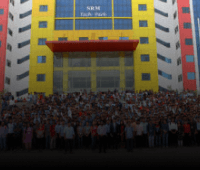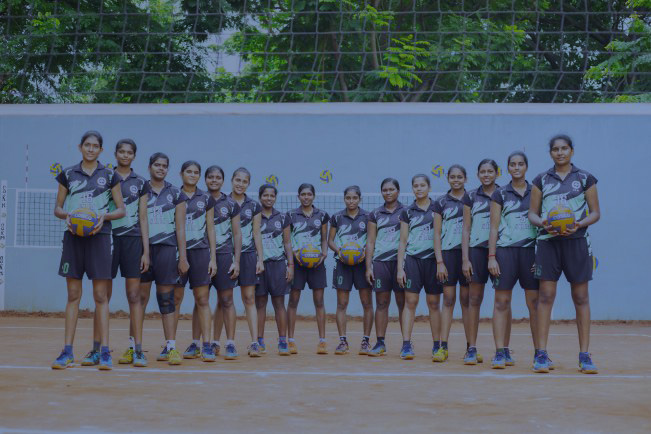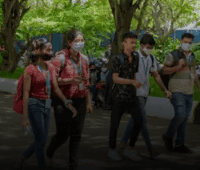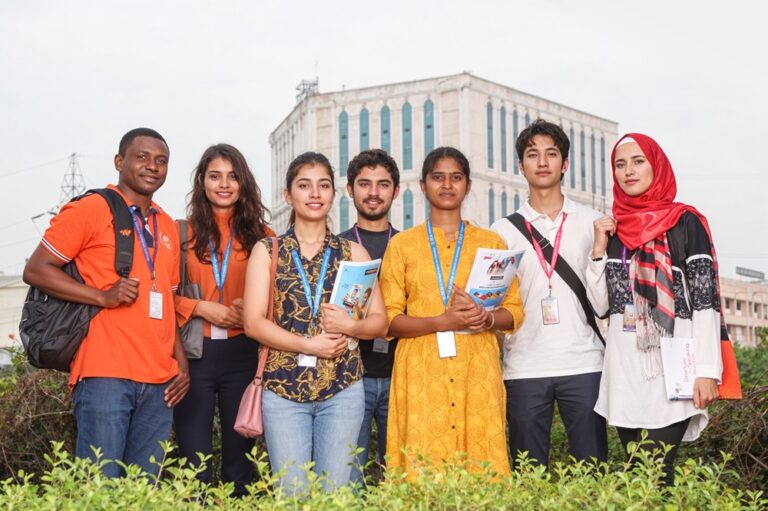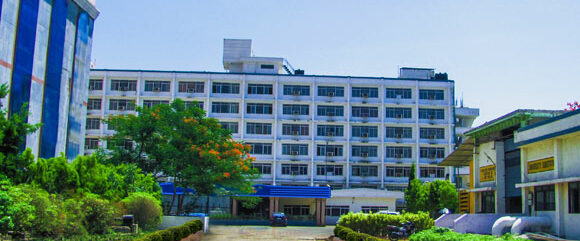Dr. Rohit Chakraborty
Dr. Rohit Chakraborty joined as a Research Assistant Professor at the Department of Physics and Nanotechnology at the SRM Institute of Science and Technology on 20 September 2024. He completed his MTech and PhD from the University of Calcutta during 2012 and 2017 after which he worked as a National Post Doctoral Fellow and a C V Raman Post Doctoral Fellow in National Atmospheric Research Laboratory and Indian Institute of Science between 2017-2020. Before joining this position, he was serving as an INSPIRE Faculty in Divecha Centre for Climate Change, Indian Institute of Science, Bangalore during September 2020 – September 2024. He has about 11 years’ experience in research, teaching, supervision, and outreach regarding the characterization and prediction of weather extremes over Indian region and has authored 22 Journal papers with an h index of 16. Besides, he has also worked as the Principal Investigator of 3 projects funded by TEQIP, SERB and DST till date. He has received Young Scientist Award from URSI for 4 consecutive times between 2017-2022 and has recently been elevated to senior member status in both IEEE and URSI. His main topics of research are as follows:
▪ Unravelling the physical mechanisms responsible for lightning and its sensitivity to all natural and anthropogenic factors at various spatiotemporal scales using observation and modelling
▪ Investigation of long-term trends of convective severity associated with lightning and thunderstorm events across India
▪ Qualitative and quantitative prediction of intense convective rainfall using ground based multi- frequency radiometric observations
▪ Investigation of planetary boundary layer and upper troposphere lower stratosphere dynamics during convective rain
▪ Unraveling the physical mechanisms responsible for lightning and its sensitivity to all
natural and anthropogenic factors at various spatio-temporal scales.
▪ Investigation of long-term trends in lightning and thunderstorm severity over India
▪ Use of electric field observations for nowcasting of lightning strikes in 20 km radius
▪ Qualitative & quantitative prediction of intense convective rainfall using brightness temperatures at 22, 31 and 58 GHz and instability data from ground based multi-frequency radiometric observations.
▪ Investigation of planetary boundary layer and upper troposphere – lower stratosphere dynamics from multi-instrument observations during convective rain
21PYB102J : Semiconductor Physics and Computational Methods for January – June 2025
4th Semester MSc Atmospheric Science Project Work
| Degree | Institute/Organisation | Specialisation | Year Of Passing |
|---|---|---|---|
| BTech | West Bengal University of Technology | Electronics and Communication | 2010 |
| MTech | University of Calcutta | Radio Physics and Electronics | 2012 |
| PhD | University of Calcutta | Radio Physics and Electronics | 2017 |
- Pandidurai, D., Attada, R., Chakraborty, R., Kumari, A., & Kumar, P. (2025). “Widespread monsoon extreme rainfall events over central Indian region: influence of dynamics and thermodynamics”. Climate Dynamics, 63(3), 1-19 http://dx.doi.org/10.1007/s00382-025-07641-8
- Gargi Rakshit, Rohit Chakraborty, Animesh Maitra, “Micro Rain Radar and Radiometric Measurements to Unravel Contrasting Features of Rain Microstructure Below and Above the Boundary Layer”, Radio Science, 02/2024, Impact Factor: 1.6, Quartile: Q2, 59(2), https://doi.org/10.1029/2023RS007875
- Deepanshu Aggarwal, Rohit Chakraborty, Raju Attada, “Investigating Bi-Decadal Precipitation Changes over Northwest Himalayas during Pre-Monsoon: Role Pacific Decadal Oscillations”, Climate Dynamics, Impact Factor: 3.8, Quartile: Q1, 62(2), 1203-1218, https://doi.org/10.1007/s00382-023-06969-3
- Soumyajyoti Jana, Rohit Chakraborty, Animesh Maitra, “Lightning Prediction Using Electric Field Measurements Associated with Convective Events at Tropical Location”, Pure and Applied Geophysics, 01/2023, Impact Factor: 1.9, Quartile: Q2, 180(3), 1173-1184, https://doi.org/10.1007/s00024-023-03229-7
- Ghouse Basha, Venkat Ratnam M, Yesubabu Viswanadhapalli, Rohit Chakraborty, Saginela Ravindra Babu, P. Kishore, “Impact of COVID-19 lockdown on the Atmospheric Boundary Layer and Instability process over Indian region”, Science of the Total Environment, 04/2022, Impact Factor: 8.2, Quartile: Q1, 832, 154995, https://doi.org/10.1016/j.scitotenv.2022.154995
- Deepanshu Aggarwal, Raju Attada, K.K. Shukla, Rohit Chakraborty, Ravi Kumar Kunchala, Monsoon precipitation characteristics and extreme precipitation events over Northwest India using Indian high resolution regional reanalysis, Atmospheric Research, 01/2022, Impact Factor: 4.5, Quartile: Q1, 267, https://doi.org/10.1016/j.atmosres.2021.105993
- Rohit Chakraborty, Arindam Chakraborty, Ghouse Basha, Venkat Ratnam Madineni: Lightning occurrences and intensity over the Indian region: long-term trends and future projections. Atmospheric Chemistry and Physics 07/2021; Impact Factor: 5.2, Quartile: Q1, 21: 11161-11177.
- Rohit Chakraborty, Bijay Kumar Guha, Shamitaksha Talukdar, Madineni Venkat Ratnam, Animesh Maitra: Growth in mid-monsoon dry phases over the Indian region: prevailing influence of anthropogenic aerosols. Atmospheric Chemistry and Physics 10/2019; Impact Factor: 5.2, Quartile: Q1, 19(19):12325-12341.
- Shamitaksha Talukdar, M. Venkat Ratnam, V. Ravikiran, Rohit Chakraborty: Influence of Black Carbon Aerosol on the Atmospheric Instability. Journal of Geophysical Research, Atmospheres, 04/2019; Impact Factor: 3.8, Quartile: Q1, DOI:10.1029/2018JD029611
- Rohit Chakraborty, Venkat Ratnam Madineni, Ghouse Basha: Long-term trends of instability and associated parameters over the Indian region obtained using a radiosonde network. Atmospheric Chemistry and Physics 10/2019; Impact Factor: 5.2, Quartile: Q1, 19(6): 3687–3705.
- Animesh Maitra, Gargi Rakshit, Soumyajyoti Jana, Rohit Chakraborty: Effect of Boundary Layer Dynamics on the Profiles of Rain Drop Size Distribution During Convective Rain. IEEE Geoscience and Remote Sensing Letters 01/2019; Impact Factor: 4.0, Quartile: Q1, 99:1-5., DOI:10.1109/LGRS.2019.2891906
- Rohit Chakraborty, Ghouse Basha, M. Venkat Ratnam : Diurnal and long-term variation of instability indices over a tropical region in India. Atmospheric Research, Impact Factor: 4.5, Quartile: Q1, 207, 145-154.
- Animesh Maitra, Rohit Chakraborty: Prediction of Rain Occurrence and Accumulation using Multifrequency Radiometric Observations. IEEE Transactions in Geoscience and Remote Sensing, Impact Factor: 7.5, Quartile: Q1, 56(5), 2789-2797, 2018. DOI: 10.1109/TGRS.2017.2783848.
- Rohit Chakraborty, Upal Saha, A.K. Singh, Animesh Maitra: Association of atmospheric pollution and instability indices: A detailed investigation over an Indian urban metropolis. Atmospheric Research 11/2017; Impact Factor: 4.5, Quartile: Q1, 196:83-96., DOI:10.1016/j.atmosres.2017.04.033
- Bijay Kumar Guha, Rohit Chakraborty, Upal Saha, Animesh Maitra: Tropopause height characteristics associated with ozone and stratospheric moistening during intense convective activity over Indian sub-continent. Global and Planetary Change 09/2017; Impact Factor: 4.0, Quartile: Q1, 158.,
- Rohit Chakraborty, Shamitaksha Talukdar, Upal Saha, Soumyajyoti Jana, Animesh Maitra: Anomalies in relative humidity profile in the boundary layer during convective rain. Atmospheric Research 07/2017; Impact Factor: 4.5, Quartile: Q1, 191:74-83., DOI:10.1016/j.atmosres.2017.03.011
- Nandita D. Ganguly, Rohit Chakraborty, Animesh Maitra: Can Nor’wester events initiate stratospheric moistening?. Journal of Atmospheric and Solar-Terrestrial Physics, Impact Factor: 1.8, Quartile: Q2, 164.
- Upal Saha, Rohit Chakraborty, Animesh Maitra, A.K. Singh: East-west coastal asymmetry in the summertime near surface wind speed and its projected change in future climate over the Indian region. Global and Planetary Change 05/2017; Impact Factor: 4.0, Quartile: Q1, 152:76-87., DOI:10.1016/j.gloplacha.2017.03.001,
- Saurabh Das, Rohit Chakraborty, Animesh Maitra: A random forest algorithm for nowcasting of intense precipitation events. Advance in Space Research, Impact Factor: 2.8, Quartile: Q1, 60(6), 1271-1282.
- Rohit Chakraborty, Animesh Maitra: Retrieval of atmospheric properties with radiometric measurements using neural network. Atmospheric Research 11/2016; Impact Factor: 4.5, Quartile: Q1, 181:124–132.,
- Rohit Chakraborty, Saurabh Das, Animesh Maitra: Prediction of convective events using multi-frequency radiometric observations at Kolkata. Atmospheric Research 03/2016; Impact Factor: 4.5, Quartile: Q1, 169(Part-A):24–31.
- Saurabh Das, Souvik Majumder, Rohit Chakraborty, Animesh Maitra: Simplistic approach for water vapour sensing using a standalone global positioning system receiver. IET Radar, Sonar & Navigation 10/2014; Impact Factor: 1.4, Quartile: Q2, 8(8):845-852., DOI:10.1049/iet-rsn.2013.0312
- Rohit Chakraborty, Saurabh Das, Soumyajyoti Jana, Animesh Maitra: Nowcasting of rain events using multi-frequency radiometric observations. Journal of Hydrology 05/2014; Impact Factor: 5.9, Quartile: Q1, 513, 467-474, DOI:10.1016/j.jhydrol.2014.03.066
Apr 2017 Grant: National Post-Doctoral Fellowship
Apr 2017 Award: Young Scientist Award from India in URSI GASS 2017
Jun 2019 Grant: C V Raman Post-Doctoral Fellowship
Apr 2020 Grant: INSPIRE Faculty
Jun 2020 Award: Young Scientist Award from India in URSI GASS 2020
May 2021 Award: Young Scientist Award from India in URSI GASS 2021
Mar 2022 Award: Young Scientist Award from India in AP AT RASC 2022
● Rohit Chakraborty, Gargi Rakshit, Animesh Maitra, Estimation of Rain Attenuation from Effective Rain Rate calculations over a Tropical Location, CODEC 2023, 03/2024, https://doi.org/10.1109/CODEC60112.2023.10466082
● Rohit Chakraborty, Deepanshu Aggarwal, Raju Attada, Arindam Chakraborty, Impact of Global Teleconnections on Lightning activities over the Northwest Himalayan Regions, URSI-GASS 2023; 08/2023, DOI: 10.23919/URSIGASS57860.2023.10265542
● Rohit Chakraborty, Arindam Chakraborty, Sensitivity of Surface Temperatures towards Lightning over the Indian Subcontinent, URSI-GASS2023; 08/2023, Sapporo, Japan DOI: 10.23919/URSIGASS57860.2023.10265597
● Gargi Rakshit, Rohit Chakraborty, Animesh Maitra, Investigation of the Evolution of the Height Profiles of Rain Microphysical Parameters: A Seasonal Comparison at a Tropical Location, URSI-GASS 2023; 08/2023, DOI: 10.23919/URSIGASS57860.2023.10265441.
● Rohit Chakraborty, Parth Sanjeev Menghal, Arindam Chakraborty, Lightning to rainfall ratio: a global perspective, URSI Regional Conference on Radio Science (USRI-RCRS) 2022; 01/2022, DOI: 10.23919/URSI-RCRS56822.2022.10118447
● Rohit Chakraborty, Arindam Chakraborty, Gridded estimation of lightning frequency over eastern Indian subcontinent using neural networks, IEEE CONECCT 2022; 09/2022, DOI: 10.1109/CONECCT55679.2022.9865793
● Rohit Chakraborty, Boda Srinivas, Arindam Chakraborty, Impact of lithium mining on climate change in the Atacama Desert, South America, URSI-AP-ATRASC 2022; 08/2022, DOI: 10.23919/AT-AP-RASC54737.2022.9814388
● Rohit Chakraborty, Parth Sanjeev Menghal, Marikundam Harshitha, Mobalaji Aduramo Sodunke, Climatology of lightning activities across the Equatorial African region, URSI-AP-ATRASC 2022; 08/2022, DOI: 10.23919/AT-AP-RASC54737.2022.9814276
● Arijit De, Rohit Chakraborty, Arpita Adhikari, Study of Oxides and aerosols in connection with COVID 19 lockdown scenario over a Metropolitan City, Kolkata, URSI-GASS 2021; 08/2021, DOI:10.23919/URSIGASS51995.2021.9560635
● Rohit Chakraborty, Arindam Chakraborty, Microphysical impact of aerosols on cloud electrification efficiencies over the Indian region, URSI-GASS 2021; 08/2021, DOI: 10.23919/URSIGASS51995.2021.9560478
● Rohit Chakraborty, Arindam Chakraborty, Goushe Basha, Madineni Venkat Ratnam, Long-term trends in lightning frequency and intensity over the Indian region, URSI-GASS 2020; 08/2020, DOI:10.23919/URSIGASS49373.2020.9232177
● Arijit De, Rohit Chakraborty, Animesh Maitra: Radiometric measurements of cloud attenuation over Earth-space path at a tropical location. URSI-GASS 2017; 08/2017, DOI:10.23919/URSIGASS.2017.8105203
● R Chakraborty, A Maitra: Boundary layer anomalies observed from radiometric observations during convective rain. URSI-GASS 2017, Montreal Canada; 08/2017, DOI:10.23919/URSIGASS.2017.8105104
● Animesh Maitra, Rohit Chakraborty: Rain Prediction Using Radiometric Observations at a Tropical Location. URSI-GASS 2017, Montreal Canada; 08/2017, DOI:10.23919/URSIGASS.2017.8105124
● Rohit Chakraborty, Goushe Basha, M Venkat Ratnam: Long term climatology of instability indices over Gadanki, a tropical region in India. UPCAR-2017, Tirupati; 06/2017
● Soumyajyoti Jana, Rohit Chakraborty, Animesh Maitra: Prediction of Lightning strikes using Electric Field at a Tropical Location. 12th International Conference on Microwaves, Antennae, Propagation and Remote Sensing, Jodhpur, India; 02/2017
● Gargi Rakshit, Rohit Chkraborty, Animesh Maitra: Effect of vertical wind on rain drop size distributions in the boundary layer. International Symposium on Antennas and Propagation (ISAP 2016) Okinawa, Japan, 24-28 October 2016, Okinawa Convention Center, Ginowan, Okinawa, Japan; 10/2016
● Animesh Maitra, Soumyajyoti Jana, Rohit Chaktaborty: Convective rain study with radiometer, radar and electric field observations at a tropical location. Proceedings of ISAP2016, Okinawa, Japan; 10/2016
● Gargi Rakshit, Rohit Chakraborty, Animesh Maitra: Effect of vertical wind on rain drop size distributions in the boundary layer. Proceedings of ISAP2016, Okinawa, Japan; 10/2016
● Animesh Maitra, Rohit Chakraborty, Soumyajyoti Jana: Prediction of convective rainfall using multi-technique observations. 2016 URSI Asia-Pacific Radio Science Conference, Seoul, Korea; 08/2016, DOI:10.1109/URSIAP-RASC.2016.7601354
● Soumyajyoti Jana, Arpita Adhikary, Rohit Chakraborty, Animesh Maitra: Behaviour of Atmospheric Electric Field at a Tropical Location. National Space Science Symposium (NSSS 2016), Thiruvananthapuram; 02/2016
● Shamitaksha Talukdar, Rohit Chakraborty, Thumree Sarkar, Soumyajyoti Jana, Animesh Maitra: Signature of Earthquakes on Tropospheric temperature profiles. National Space Science Symposium (NSSS 2016), Thiruvananthapuram; 02/2016
● Soumyajyoti Jana, Rohit Chakraborty, Thumree Sarkar, Animesh Maitra: Multi-technique observations of a hailstorm event at a tropical location. Conference on Computers and Devices for Communication (CODEC 2015), Kolkata; 12/2015
● Bijay Kumar Guha, Bidisha Nandy, Rohit Chakraborty, Animesh Maitra: Rain Attenuation over Earth Space Path from Radar and Propagation Measurements at Tropical Location. CODEC 2015, Kolkata; 12/2015, DOI:10.1109/CODEC.2015.7893173
● Rohit Chakraborty, Animesh Maitra: Estimation of path integrated attenuation using ground rain rate measurements at tropical location. International Conference on Microwaves Antennae Propagation and Remote Sensing (ICMARS 2015), Jodhpur (Rajasthan); 12/2015
● Rohit Chakraborty, Soumyajyoti Jana, Thumree Sarkar, Animesh Maitra: Multi-technique observations of a hailstorm event. International Conference on Microwaves Antennae Propagation and Remote Sensing (ICMARS 2015), Jodhpur (Rajasthan); 12/2015
● Rohit Chakraborty, Animesh Maitra: Prediction of accumulated rain using brightness temperature observations at a tropical location. URSI Regional Conference on Radio Science (RCRS 2015), New Delhi; 11/2015
● Sneha Banerjee, Rohit Chakraborty, Animesh Maitra, S K Mitra: A comparative study of liquid water profiles over Indian Subcontinent using CLOUDSAT data. INTERNATIONAL CONFERENCE IN MICROWAVES ANTENNAE PROPAGATION AND REMOTE SENSING, JODHPUR; 12/2014
● Rohit Chakraborty, Sumutaksha Talukdar, Animesh Maitra, S K Mitra: Relative Humidity anomalies due to boundary layer meteorology during rain. INTERNATIONAL CONFERENCE IN MICROWAVES ANTENNAE PROPAGATION AND REMOTE SENSING, JODHPUR; 12/2014
● Arijit De, Rohit Chakraborty, Animesh Maitra, S K Mitra: Studies on rain induced scintillation during convective events over Kolkata. INTERNATIONAL CONFERENCE IN MICROWAVES ANTENNAE PROPAGATION AND REMOTE SENSING, JODHPUR; 12/2014
● Animesh Maitra, Soumyajyoti Jana, Rohit Chakraborty, Souvik Majumder, S K Mitra: Multi-technique observations of convective rain events at a tropical location. URSI-GAAS 2014, Beijing,China; 08/2014, DOI:10.1109/URSIGASS.2014.6929640
● Rohit Chakraborty, Thumree Sarkar, Soumya jyoti Jana, Arpita Adhikary, Animesh Maitra: Signature of Convective Phenomena on Atmospheric Electric Field. National Space Science Symposium(NSSS), Dibrugarh; 01/2014
● Rohit Chakraborty, Saurabh Das, Animesh Maitra: Convective activities and atmospheric instabilty: radiometric observations at Kolkata. RCRS 2014; 01/2014
● Rohit Chakraborty, Soumyajyoti Jana, Saurabh Das, Animesh Maitra: Prediction of Convective activities using Radiometric observations at Kolkata. International Conference of Microwave Antenna and RemoteSensing (ICMARS), Jodhpur; 12/2013
● Soumyajyoti Jana, Thumree Sarkar, Rohit Chkraborty, Saurabh Das, Animesh Maitra: Some studies on convective rain associated with Indian summer monsoon using radar, radiometer and disdrometer. International Conference of Microwave Antenna and Remote Sensing (ICMARS), Jodhpur; 12/2013
● Saurabh Das, Rohit Chakraborty, Shamitaksha Talukdar, Animesh Maitra: Nowcasting of tropical rain using dual frequency atmospheric brightness temperatures at Kolkata. CODEC-2012 (IEEE), KOLKATA; 12/2012
● Souvik Majumder, Rohit Chakraborty, Saurabh Das, Animesh Maitra: Observations Of Water Vapor With GPS Receiver, Radiometer And Radiosonde At A Tropical Location. International Conference of Microwave Antenna and Remote Sensing (ICMARS), Jodhpur; 12/2012
● Rohit Chakraborty, Saurabh Das, Shamitaksha talukdar, Animesh Maitra: Some Features Of Microwave Brightness Temperatures For Nowcasting Applications At Kolkata. International Conference of Microwave Antenna and Remote Sensing (ICMARS), Jodhpur; 12/2012
Projects:
- Worked with ISRO project on “Integrated Studies on Water Vapour, Liquid Water Content and Rain of the Tropical Atmosphere and Their Effects on Radio Environment” from 13 July 2012 to 31 March 2014 as Junior Research Fellow at the University of Calcutta
- Worked with ISRO project on “Ku/Ka Band Channel Modeling for SATCOM Links over Indian Region” from 26 September 2014 to 25 September 2016 as Junior Research Fellow at University of Calcutta
- Undertaken student project on “Calibration of satellite signal at Ku Band” under TEQIP II during November 2013 -2014 at the University of Calcutta
- Completed post-doctoral research in National Atmospheric Research Laboratory as PI with a project from SERB under National Post-Doctoral Scheme
- Completed post-doctoral research under C V Raman Post-Doctoral Fellowship in Indian Institute of Science, Bangalore.
- Currently associated with INSPIRE Faculty Project as PI in IISC and SRMIST.
Academic Experience:
Teaching:
Fundamentals of Climate Science to UG students at IISc during Jan-Apr 2021 semester
Supervision:
1 MS dissertation (Srishti Anand TERI SAS) 1 BS dissertation (Roshan Gowda UG IISc)
Outreach:
Organized a 1-day seminar on “Environmental Sustainability – A Transdisciplinary Perspective” under GAUC wing of IISc on 21 November 2023
Served as an Invited speaker at URSI RCRS (IIT Indore) on 2022, URSI GASS (Sapporo Japan) on 2023 and at NCBS Bangalore on 2024.
Other Professional Experience:
- Research Assistant Professor: Department of Physics and Nanotechnology, SRMIST Kattankulathur, during 20 September 2024 – Till Date.
- INSPIRE Faculty: Divecha Centre for Climate Change, IISc Bangalore, during 28 September 2020 – 17 September 2024.
- C V Raman Post doctoral Fellow: Centre for Atmospheric and Oceanic Sciences, IISc Bangalore, during 21 June 2019 – 21 September 2020.
- National Post Doctoral Fellow: ASDG, National Atmospheric Research Laboratory Tirupati, during 7 April 2017 – 6 April 2019
- Junior Research Fellow: SKMC, Institute of Radio Physics and Electronics, CU Kolkata, during 26 September 2014 – 25 September 2016.
- Junior Research Fellow: SKMC, Institute of Radio Physics and Electronics, CU Kolkata, during 13 July 2012 – 31 March 2014.
Life Member:
Indian Radio Science Society (InRaSS)
European Geophysical Union (EGU)
South Asian Meteorological Association (SAMA)
Senior Member:
International Union of Radio Science (URSI) Institute of Electrical and Electronics Engineers (IEEE) & Geoscience & Remote Sensing Society (IEEE GRSS)
Class in-charge for MSc Atmospheric Sciences second year courses.
Local Organizing Committee member for PROBA-3 SWT
Registration Committee member for ICONN 2025


